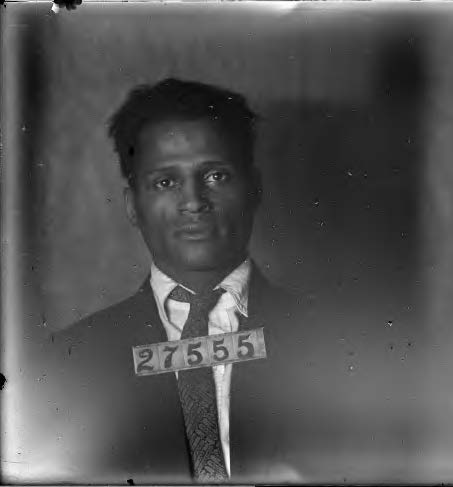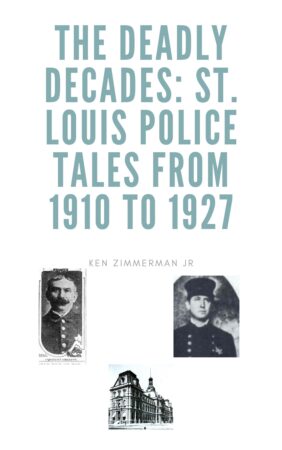Ira Cooper resolve o roubo de xoias
En novembro 10, 1924, Mrs. A.W. Stickney estaba deixando o St. Louis Country Club, cando se lle achegaron dous homes afroamericanos. O home de pel máis clara díxolle á Sra. Stickney para entregarlle as xoias ou quitárallas. Fearing for her safety, Mrs. Stickney entregoulle ao home as súas xoias, valorado en $17,000.00, e $85.00 in cash.
Mrs. Stickney reported the robbery to the St. Louis Policía, who assigned Sgt. Ira L. Cooper and his team to the case. SGT. Cooper oversaw a team of highly successful African-American detectives, who solved many cases over the years.

Alonzo Dowell, one of the robbers, do Dominio Público
Based on the description of the robbers and the method used, SGT. Cooper thought he knew who robbed Mrs. Stickney. SGT. Cooper’s suspicions were confirmed, when an informant came forward with critical information. A chauffeur, working for Mrs. Stickney’s friend, told a dealer in stolen goods about Mrs. Stickney’s jewelry. The fence contacted two men, who he provided with the information to rob Mrs. Stickney. One of the men was Sgt. Cooper’s suspect.
SGT. Cooper, Detective Johnson and Detective Harris arrested Alonzo Dowell, a 29-year-old man, who was out on bond from two other robbery charges. Dowell admitted the robbery and implicated Homer Brown as his accomplice. Cooper said as soon as he heard the description, he suspected Alonzo Dowell.
SGT. Cooper and his men were able to recover Mrs. Stickney’s jewelry as well as solving the case. For their efforts, SGT. Cooper, Detective Johnson and Detective Harris received a $3,000 reward. $1,000 came from Mr. Stickney and $2,000 was provided by the St. Louis Country Club. SGT. Cooper donated $600 to the Police Association Relief Fund and then divided up the $2,400 with his men.
In June 1925, Alonzo Dowell and Homer Brown were sentenced to 25 years in prison for the robbery. Homer Brown continued to declare his innocence both before and after the trial. He was paroled in 1935 and stayed out of trouble. En 1941, he was granted his voting rights again, which may have indicated some official doubt about his guilt. Mrs. Stickney identified Dowell but never could say Brown was the other man.
Alonzo Dowell was paroled in 1939. Unlike Homer Brown, Dowell went back to his criminal ways. After committing several burglaries, Dowell was returned to prison in 1942 to serve the remainder of his original sentence and the new sentences. Dowell died in the prison hospital on March 3, 1947 from the effects of pneumonia. Dowell was 50 anos.
SGT. Ira Cooper and his team solved many difficult crimes. This case is only one of their cases but it was one of the most newsworthy.
You can leave a comment or ask a question about this or any post in the comment section below, on my Facebook page.
Sources: St. Louis Post-Dispatch, Novembro 28, 1924 edition, p. 1, Decembro 2, 1924 edition, p. 7, Decembro 8, 1924 edition, p. 13 and July 24, 1941 edition, p. 8. St. Louis Star-Times, Novembro 28, 1924 edition, p. 2, Novembro 29, 1924, p. 3 e xuño 18, 1925 edition, p. 1. Missouri Penitentiary Database and Missouri Death Certificate Database.
Pin It

